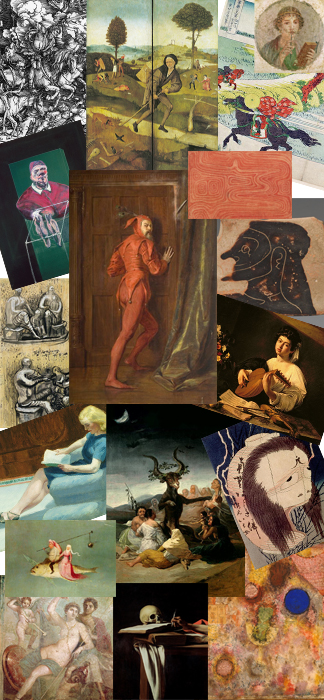Published 01/06/2012
Timothy Don, Art Director for "Lapham's Quarterly," on why he has the best job in NYC, his creative process and why Bridgeman is his go-to image archive.
I have pretty much the best job in New York City. For each issue, I get to look at anywhere from 10-15,000 images, come up with a shortlist of 500 hundred or so and then pick about 100 to include. It’s certainly a challenge, but it’s a beautiful one. The Bridgeman Art Library is one of the first places I go, for ideas, for research, and for hi-res reproductions. I believe that for the issue we did on Religion, I considered roughly 12,000 images on the Bridgeman site alone.
|

|
There are always certain pieces of art I know that I want to include in a particular issue. Goya’s Witches’ Sabbath needed to find a page in our most recent issue, on Magic; Durer’s Four Horsemen of the Apocalypse was a shoo-in for our issue on the Future. We couldn’t do an issue on Family without including Henry Moore’s Family Group from 1944—which ended up on our cover. It has been a revelation to learn that there are certain artists and time periods that have something profound to say on almost any topic: Caravaggio, for example, could easily feature in every issue we do. Hieronymus Bosch as well. Hokusai is another. There is a timelessness and poignancy to the Pompeiian frescoes that practically guarantees them a spot every quarter. Likewise with the red and black-figure kraters from ancient Greece. Where the moderns are concerned, well, we run a Paul Klee in probably three out of every four issues. We often turn to Francis Bacon. I could fill entire issues using only Andrew Wyeth and Edward Hopper. All of these artists and periods seem to work not only in the realm of color and paint but in the world of ideas, much like the "Quarterly." I suppose that is why I return to them again and again. |
The Bridgeman Art Library is invaluable to "Lapham’s Quarterly", as is Wendy Zieger, the Researcher and Rights Executive I work with there. Wendy does research for us, clears copyright, hunts down caption information, delivers images, tracks orders, scrambles at the last minute to help us fill holes, and much more—and she does it all with patience, a sense of humor, and a warm smile. We at the "Quarterly" consider Wendy and all the people at Bridgeman much more than suppliers: whether or not they know it, they are actually partners in this project. We could not complete it without them.
-Timothy Don, Art Director for "Lapham's Quarterly"
Click here to read the interview with the "Quarterly's" founder, Lewis Lapham


